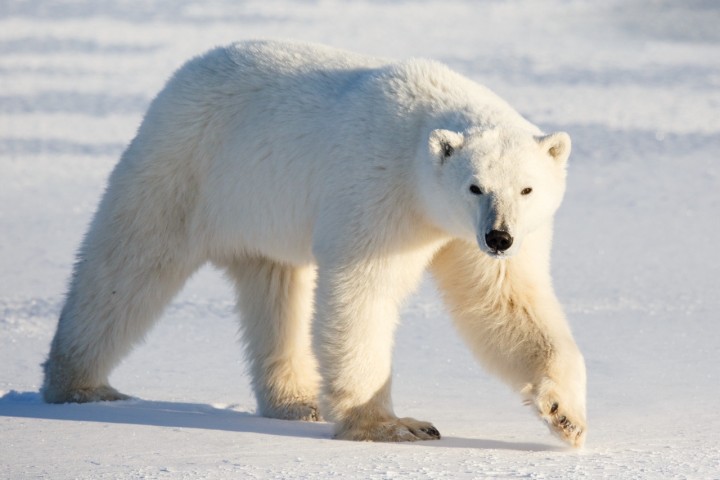Bigger, Faster, Stronger: Why Polar Bears Are the Most Prolific Record-Breaking Bears

It’s also a time to reflect on the ever-mounting challenges that this species is facing as the effects of global warming take their toll on their Arctic home.
Today, polar bears, aka ice bears, are the largest bears on Earth. Adult males weigh more than a half a tonne and measure up to 2.6 m (8 ft 6 in) long from head to tail. Reared up on its hind legs, meanwhile, a polar bear can be as tall as two 12-year-olds, if one was standing on the other’s shoulders!
These bears are the ultimate polar nomads, with the largest home range for a terrestrial mammal. Females in the Hudson Bay area of Canada have been documented patrolling a territory that spans some 100,000 square kilometres (38,610 square miles) – that’s the same size as Iceland.
Mothers need so much space to avoid clashes with other bears – particularly dangerous males which are a threat to young polar bears. A big home range also provides ample food sources for both her own needs, preparing for hibernation if she is due to give birth, or to feed existing cubs who need to grow up quickly to survive in this harsh habitat.
Polar bear mothers have the richest bear milk – constituted of up to 48.4% fat – which is equivalent to double cream. Maintaining this supply of unctuous milk requires females to consume a lot of blubber-rich food. Hence why these bears have the fattiest diet in the animal kingdom, reaching as high as 50% fat by wet mass in the spring and summer when seals are most plentiful.
As sea-ice in the Arctic Ocean and adjacent seas continues to diminish, polar bears are placed under ever-greater pressure. According to NASA and the National Snow and Ice Data Center, 2018’s minimum sea-ice extent was some 1.63 million km2 (629,000 sq mi) – an area larger than Mongolia – short of the average level between 1981 and 2010.
For one thing, it means that these bears are having to travel farther and farther between patches of sea-ice. The longest distance swam by a polar bear in one go is a staggering 685 km (426 mi) – that equates to 20 trips across the English Channel – logged over a period of nine days straight in 2008.
Although full-grown polar bears are strong swimmers, marathon distances like this are exhausting and burn up vital calories – plus tragically less-developed cubs won’t always be able to keep up.
Presented with starvation, it also means that many polar bears are being forced to venture farther south in search of food. This leads inevitably to more clashes with people as they wander into towns and settlements to scavenge leftovers.
The race is on to reduce the environmental damage being wreaked on polar bear habitat by climate change. Stabilizing Arctic sea-ice – and hopefully, in time, reversing its decline – will go a long way to help boost the global polar bear population. (They are currently listed as Vulnerable, just one level below Endangered, by the IUCN.)
In 2015, a 10-year "Circumpolar Action Plan" was agreed between the Polar Bear Range States: Canada, Greenland (Denmark), Russia, Norway and the USA.
In addition to tackling the root causes of climate change, reducing poaching, managing human-polar bear interaction and raising awareness of the polar bear’s plight with the general public – through initiatives such as International Polar Bear Day – are also key objectives laid out in the plan.
There’s a lot more work to be done, but this unprecedented cross-nation collaboration is a huge positive step in the right direction. It’s important to remember that even the biggest and toughest animals occasionally need a helping hand.
